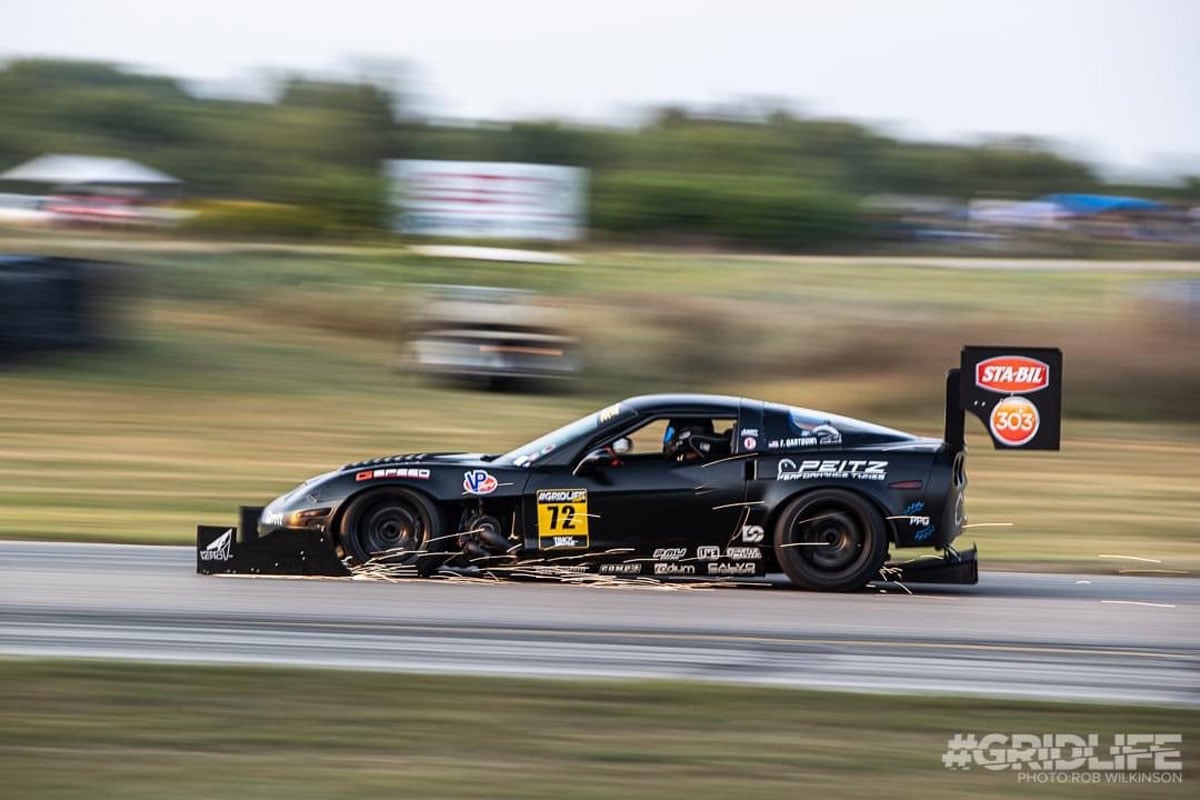Racing Suspension: Expectations vs. Reality

March 14, 2022

The best drivers or riders have the best suspension, right?
It’s partly true. It’s comforting to believe that installing the most expensive or recognizable suspension components on your car or motorcycle will help you win.
And in some cases, it might. But with advancements in technology and a highly competitive market, many suspension setups are high quality. What really matters is how your racing suspension setup affects your performance.
A big part is dialing in your shock and spring package to give you an edge over the competition.
Expectations vs. Reality: Racing Suspension and Your Performance
If it were as easy as installing the shocks that winners are using, anyone with money and the same hardware would win races and championships.
Shock absorbers can improve handling, ride, tire grip, and aerodynamic stability, so they should complement your driving or riding style and yield improvements in lap times. Remember, a very good suspension setup is driver-dependent AND component-dependent.
What pitfalls should you look out for when optimizing your suspension setup? Let’s find out.
Freshen up on Race Suspension Tuning Basics, 7 Things You Need to Know
Misconception #1: There’s a Quick Fix
Being the fastest on race day doesn’t come through luck. Sure, some drivers or riders might race better in certain conditions, but the best racers get to the highest level because they’re meticulous. They put the time in to understand their vehicle and how the changes they make will affect the handling and ride characteristics.
They know how their racing suspension as a whole works, inside and out. When they make changes to their shocks, they understand how it affects their car or bike, and in most cases, can quantify those changes and adjustments with data acquisition.
They also maintain their equipment by first setting benchmarks and then dyno testing their shocks to prevent any potential issues on race day. They know the adjustments they might make, how those changes might affect handling, and always have a base setting to return to.
FREE DOWNLOAD: How to Read a Shock Dyno Graph
In this free download, we outline how to read a dyno graph and, more importantly, what it can tell you about how your shock is performing.
Misconception #2: It’s a DIY Job
It might be tempting to think you can get the perfect setup on your own. And if you buy the best brand and shocks that are easy to install, you might think you’re onto a winner.
Racing suspension technicians spend years honing their craft, experimenting with various settings, and working with racers to get the perfect setup.
To get the most out of your shocks and suspension as a whole, lean on the support of experienced professionals.
Check out our ON-DEMAND WEBINAR: Top 10 Most Common Suspension Issues & How to Resolve Them
In this free webinar, we review the most common suspension issues you’re likely to encounter and tips for how you can resolve or avoid them altogether.
Misconception #3: Buying Because the Winner Uses It
Of course, quality matters, but buying the same brand as the leader is only partially helpful. There are many quality shock absorbers on the market. Ask a few racers which is the best, and you can almost guarantee you’ll get a few different answers.
In the past, it may have been true that simply taking off one brand and putting on a higher quality brand would make a difference. Now, it’s understanding your vehicle and how to set up your shocks that make the difference.
Misconception #4: All Drivers/Racers are the Same
Put simply, all drivers and riders are not the same. Yes, they all want to win and be the fastest, and they all want the fastest car or bike. But, they all have unique tendencies and preferences.
We see this a lot in teams. When teammates search for speed and the crew puts the fast driver’s setup onto the slow driver’s car, it seldom has the desired effect. It’s not a dark art or preferential treatment.
What one driver or rider prefers and gives them confidence might not be the same for anyone else. Don’t short-change the process of understanding your vehicle and setup. As long as humans are still racing, individual setups are essential.
Misconception #5: Special Treatment
You might think that the fastest drivers that race Penske Racing Shocks get special treatment, whether better parts or extra engineering support, etc. This is not true with Penske Racing Shocks.
Penske Racing Shocks dedicates its service to all of its customers. Whether you’re a Formula One driver or a track day rookie, you’ll receive the same level of attention and assistance from Penske Racing Shocks.
The S3 Program Puts You in the Drivers Seat
Penske Racing Shocks works tirelessly to provide any driver or rider with optimal hardware, personalized shock setup, and backend support. Your success is our success.
The S3 Program (Shock + Setup + Support) leaves nothing to chance.
The best shocks are set up for you and your preferences as a driver or rider. “Off-the-shelf” performance in racing suspension can be difficult. What matters is optimizing your shocks from the start of the process and making adjustments to get the highest level of performance out of your purchase.


%20(1).png?width=1080&height=1080&name=Heritage%20Cruiser%20Shock%20-%20IG%20(1)%20(1).png)